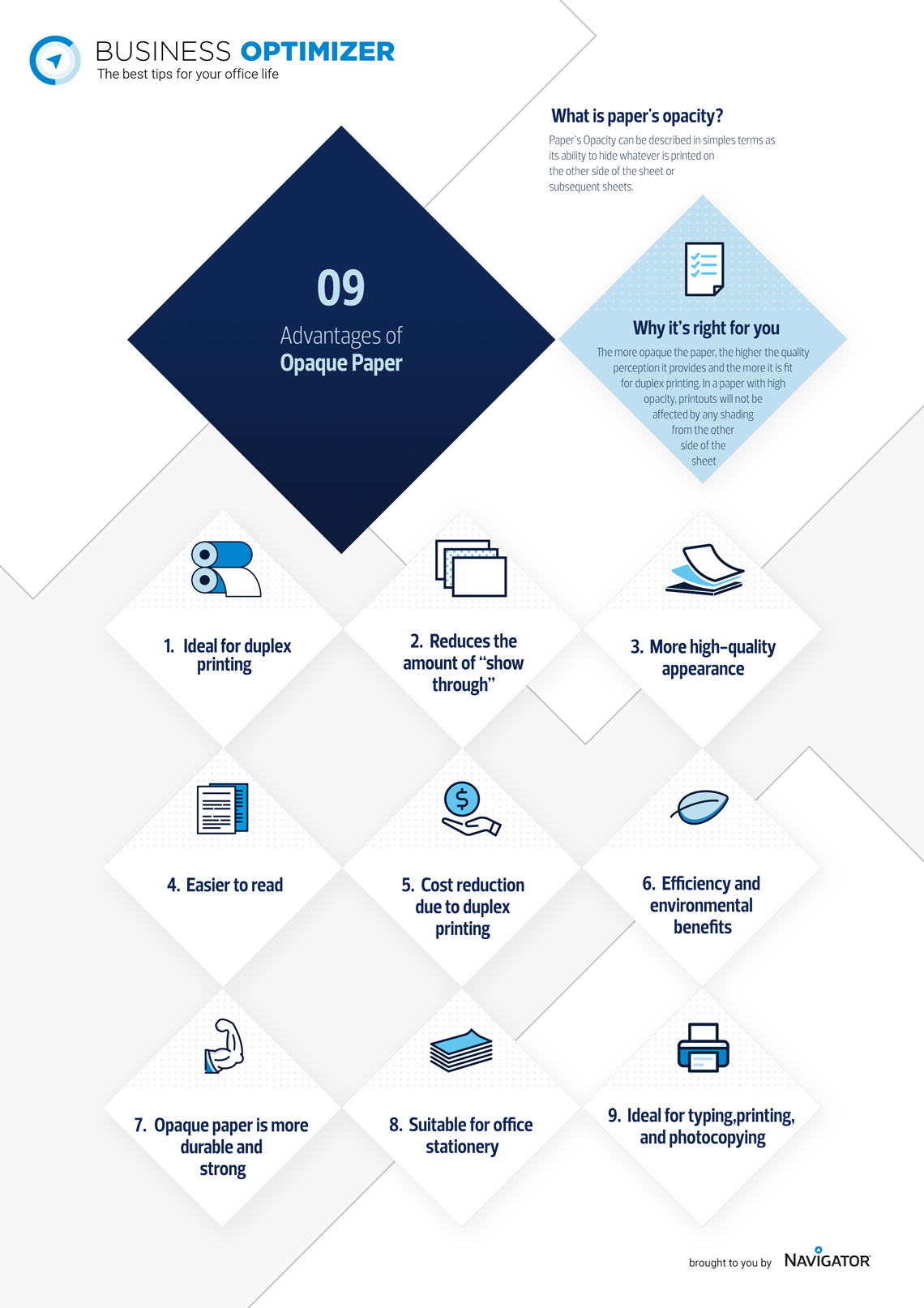There are lots of things to consider when choosing paper. One such criteria is opacity.
But… what is opacity? What are the advantages of an opaque paper? And which paper should you choose? Business Optimizer is here to help you understand why opacity is such an important feature on paper.
What is opacity?
The dictionary definition of opacity is “the quality or state of a body that makes it impervious to the rays of light; broadly: the relative capacity of matter to obstruct the transmission of radiant energy”.
About 20 years ago, it was probably most commonly used in relation to hosiery, to describe the relative thickness or sheerness of the product. Today, we’re more familiar with it on graphics software, where “opacity” settings determine the transparency of an image.
So how does the quality of lacking transparency or translucence relate to paper?
A paper that has a high degree of opacity does not allow much light to pass through it. This makes it suitable for double-sided printing runs.
On the other hand, paper with a low level of opacity will allow more light through and, as a result, printing on one side of the paper will be more visible on the other.
What are the advantages of choosing an opaque paper?
We can tell you, at least, 9 good reasons for you to look for and choose a paper with high opacity. Let’s see:
What sort of paper should you choose?
Even if you aren’t printing double-sided print runs, there are advantages to choosing an office paper with high opacity.
A more opaque paper reduces the amount of “show-through”, it produces a more high-quality appearance and is easier to read, whatever the lighting conditions.
The main ingredient of paper, cellulose fibers, are transparent. But because of the way paper is constructed, the web of fibers diffuses the light passing through the sheet. Some papers will have additives such as clay, titanium dioxide, or calcium carbonate to increase the diffusion of light through the paper and, therefore, its opacity.
Other techniques are also used to increase a paper’s opacity. For example: increasing its weight, adding special coatings, or tinting or dyeing the paper.
However, increasing the paper’s whiteness can serve to decrease its opacity. Given that most consumers are looking for a really white paper that offers a pristine, professional finish and that ensures print colors are true, looking for a paper that offers both whiteness and a good opacity is important.
Looking for a paper that offers both whiteness and a good opacity is important.
Opacity is measured in two ways: the contrast ratio method or the diffuse opacity method.
The measurement is governed by the standard ISO 2471 and often represented as a percentage. The higher the value, the more opaque the paper is.
For the best results, look for more opaque papers with good whiteness or opacified papers which have been specially treated to improve their brightness, formation and surface.







